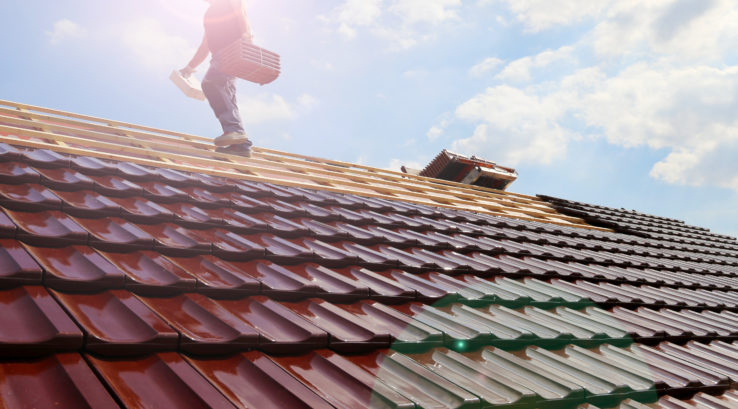Some minor roof leaks can be stopped quickly and may only take minutes to repair. Sometimes, however, the difficult part is finding the roof leak’s actual location. If you’re feeling a little out of your comfort zone in trying to find the leak, then continue reading to learn how to find a leaky roof’s location and whether you should consider a roof replacement. Although it’s always safest to hire a professional when you need to get onto your roof, there are steps you can take on your own.
The main goal is to find your leak as quickly as possible before your entire roof becomes too damaged and needs replacement. Finding the exact spot is the tricky part because water can enter your roof at one point and run down another section before it starts causing damage and soaking into your ceiling.
Common Signs of a Leaky Roof
First and foremost, you need to ensure that the leak originates in the roof. Below is a list of common signs that indicate your roof is leaking.
- Damp patches on the ceilings
- Water pooling in the attic
- Damaged or loose flashing
- Missing tiles on the roof where water could enter
- Sagging in the center of the roof
- Water-stained walls or ceilings
- Mold growth
Common Sources of a Leaky Roof
First, check some of the most common sources behind a leaky roof by investigating penetrations in the roof. Look at the following:
- Plumbing and roof vents
- Chimneys
- Dormer valleys
The leak may be centered in that area, or it may be just to the left or right of the roof penetration.
When inspecting the penetrable areas of your roof, look carefully for any of the following:
- Water stains and/or damp areas
- Dripping water
- Dark spots
- Mold
- Bulging patches
The most apparent source of leaks is often damaged or missing shingles. If you find this on your roof, then that could very well be the cause of your leak.
How To Find a Leaky Roof With Attic Access
If you have an attic in your house, then finding a roof leak is easiest on a rainy day. Go into your attic, and bring a flashlight along because water will reflect the light.
Look up at the ceiling for the reflected water. Once you locate the source of the water, draw a mark around the area. When the rain has stopped, have a helper tap on the marked area while you are on the roof. This will help you pinpoint the location on the exterior of the roof and start repairs.
Finding a Roof Leak Without an Attic
Knowing how to find a leaky roof if you don’t have access to the attic or have a vaulted ceiling is a little more challenging. You can check several places that may be the root cause, including:
- Ridge caps
- Flashing
- Boots, which are rubber seals around the plumbing vent pipes, exhaust fan flashing, and air vents
- Gutters and downspouts
If you still can’t find the source of your leaky roof, then enlist a helper and go up onto your roof with a hosepipe while the helper stands by to identify any water inside the house.
Be prepared; this is a slow process. You will need to soak each area of the roof in small sections. Isolate each area as you move from one section to the next with the hose running.
Your helper will need to call out to you at the first sign of water entering the house so you can investigate that section more closely. You may need to remove shingles.
What Is The Best The Solution?
Small holes are a quick and easy fix and best attended to immediately, since small leaks can quickly grow into big problems.
If after finding a roof leak you realize the damage is severe, you may need to replace your roof. Mold, rotted framing and sheathing, damaged ceilings, and destroyed insulation may be signs that you need a roof replacement to solve your leaky roof problem.
At Thompson Creek, one of our specialties is roof replacements. To learn more about our services, or if you need to replace your leaky roof, contact us for a free, no-obligation quotation.


